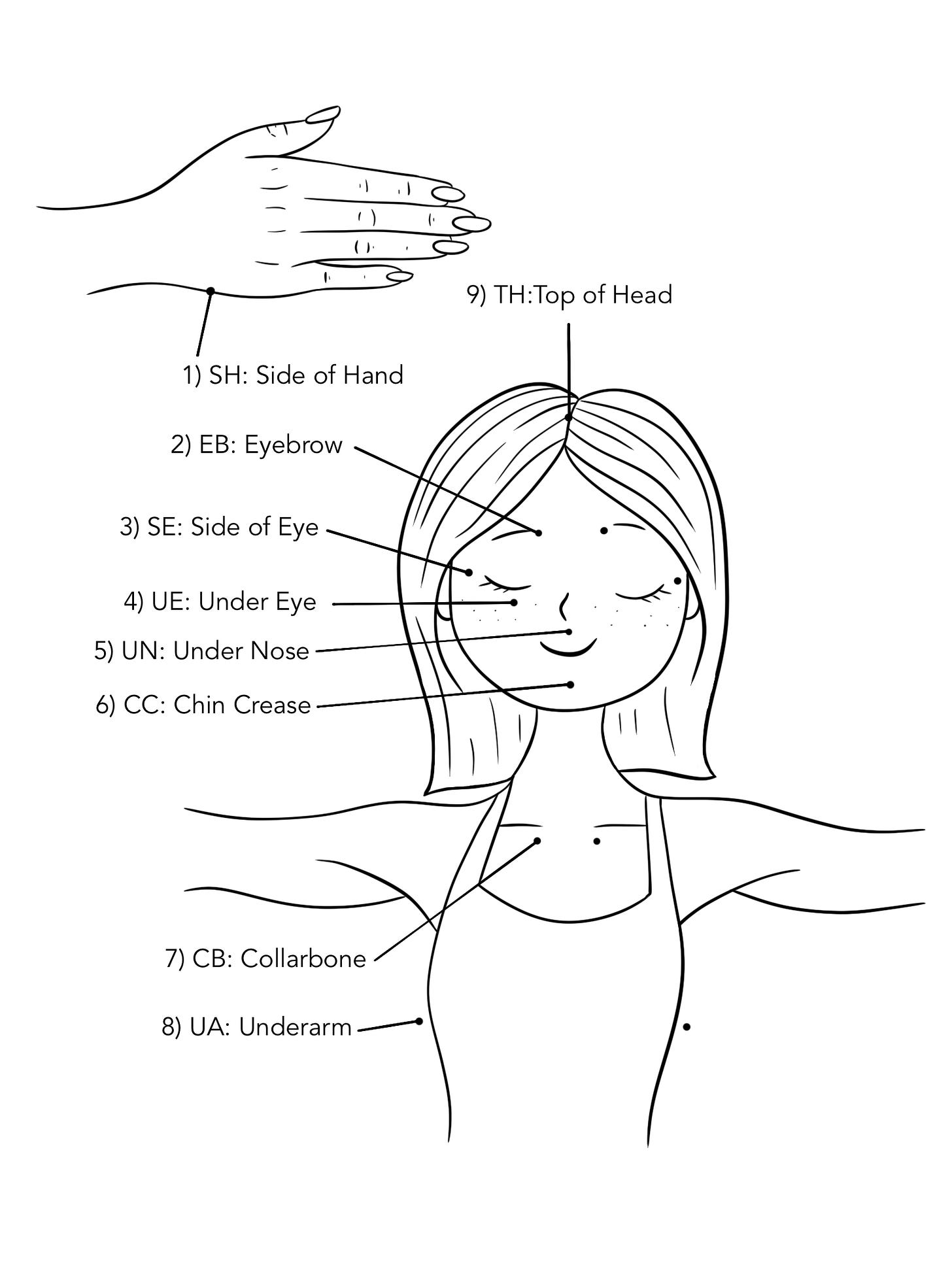Tapping Your Way to Confidence, Not Perfection
A Simple Technique for Calming the Inner Critic
Launching September 1! I’m excited to share my new mini course: Rewire Your Inner Critic. Learn how to shift self-doubt into self-leadership.
💌 Subscribe for updates!
Perfectionism pushed me to achieve everything I thought I wanted—until the day it pushed me to the ground.
My moment of recognition happened not long after earning my PhD in clinical psychology. I was in my early 30s. We just bought a home. I was starting a new job. We were having a summer barbecue, and my toddlers were playing on the swing set. With a food tray in one hand and grilling utensils in the other, I suddenly felt a seizing pulsation from the right side of my face to the end of my fingers. I thought I was having a stroke. I couldn’t articulate a sound other than muttering “911” to my husband. The fear was: “I’m going to die in front of my children.” As I heard my girls giggling in the distance, I passed out.
“Tara, just breathe,” I told myself on the gurney as I was driven off to the local ER. I lay in the hospital bed hooked up to various monitors, just relieved I wasn’t having a stroke. Later, a visit to a neurologist assured me that I did not have a brain tumor. My reflexes were working, and all lab tests were normal. The neurologist chalked it up to stress. “Try to relax,” the nurses repeatedly told me.
It took being carried out on a stretcher in front of my confused little family for me to eventually recognize I just had a panic attack. After years of striving and achieving to make something of myself, being a workaholic, and feeling like my efforts were never enough, my body had had enough.
As time passed, my panic attack began to make more sense. For months afterward, prickly sensations spread from the right side of my skull across my cheekbones, quivering at the top of my lip as if I had walked into a spider’s web. These physical sensations were ever-present, yet there was no obvious reason for them. I feared I might be losing my mind. The persistent mystery symptom left me constantly irritated and frustrated. Finally, a kind dentist offered a diagnosis: trigeminal neuralgia. The Mayo Clinic describes it as “a chronic pain disorder that causes sudden, severe facial pain, often described as electric shock-like sensations, due to irritation of the trigeminal nerve, which carries sensation to the face.”
Relieved with this knowledge, I embarked on a journey into alternative and complementary medicines that helped me to soothe the fireworks in my face. I began to consider pain in a new way—as pools of energy that could become stuck, overactive, or underactive. Physically, it was like a pinched nerve in my jaw bone. Metaphysically, my trigeminal neuralgia became an invitation to reconnect my head and heart. I found that various energetic practices removed the element of self-judgment, in part because they were gentle and gave me a sense of personal control.
As my nerve pain eased over time with the help of traditional acupuncture, I was introduced to Emotional Freedom Technique (EFT)—often called “psychological acupuncture” or, more simply, “tapping.” That changed everything.
What is Tapping?
EFT is not a stand-alone therapy but is frequently integrated into traditional counseling, mind-body medicine, and palliative care to help clients reduce distress, regulate their nervous system, and find quick relief in the moment. Its effectiveness is supported by a growing body of scientific research. Clinical EFT is also used to help people process past trauma and shift core negative beliefs that continue to impact their daily lives, work, and relationships.
At its core, EFT is a body-based stress reduction technique—a safe and efficient way to move out of a heightened stress response. Tapping is often used as therapeutic homework between sessions, and there are apps and videos available to support a self-help approach. It’s an ideal tool for perfectionists because tapping combines building distress tolerance, addressing limiting beliefs, and cultivating self-acceptance.
Tapping involves using a fingertip or two to stimulate particular acupoints located on your head, other hand, and torso. When a therapist first led me through an EFT sequence, I thought it was too silly and simple to be effective. In truth, I was more self-conscious than anything because tapping does look odd to an outsider—it’s like watching a baseball pitcher and catcher emit pitch signs. The instructions for the tapping skills literally had me physically tapping on the very areas of my face that were inflamed, as if tapping were invented for my condition!
The truth of the matter is perfectionists, myself included, often don’t have patience to practice the little things, but when done consistently they can generate big results. If you have an impatient inner doubter or skeptic, that’s OK. Plus, it’s very easy to learn and practice on your own. Tapping is also a skill I can demonstrate in my virtual office hours, if it might serve a need. See step by step recipe and my demonstration video on the belief, “I need to be perfect to be loved.”





